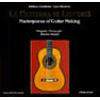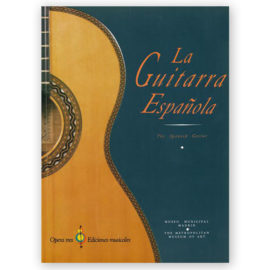Description
La Guitarra en Madrid 1750-1808
-
by Ricardo Aleixo
-
Publicación del Premio de Musicología 2015
-
Con un catálogo de la música de ese periodo conservada en las bibliotecas madrileñas
-
Soft Cover
-
443 Pages
-
Spanish Text
Si el folclore fue el gran dinamizador de la guitarra en Madrid ―y, por extensión, en España― en la segunda mitad del siglo XVIII y primeros años del XIX, el concepto de instrumento nacional solo adquiere sentido si consideramos su amplia versatilidad social y musical, es decir, su capacidad para adaptarse y situarse con facilidad en cualquier estrato y ámbito musical de la sociedad. La guitarra ocupaba un lugar destacado en el terreno de las manifestaciones artísticas y aparecía vinculada a la calle y a espacios de índole costumbrista; ejemplo de ello son las referencias a los conocidos barberos, ciegos y majos guitarristas, o los testimonios de los viajeros extranjeros, la iconografía de la época y el teatro. Pero su relación con la música académica y con guitarristas, compositores y tratadistas que se distanciaron de lo más popular también determinó un periodo que, en el plano organológico, vería emerger la guitarra de seis órdenes y la de seis cuerdas simples. Sin embargo, la importancia de la guitarra en el contexto de la música española del siglo XVIII solo se puede entender plenamente si conocemos su vertiente cortesana, en la que destacaron aficionados ilustres como reinas, infantes y aristócratas. El hecho es que la guitarra ―popular, académica o cortesana― se había transformado en un símbolo cultural y musical de la España y del Madrid dieciochesco.
“English Abstract”
The late 18th and early 19th-centuries witnessed a revitalization of the guitar in Madrid —and by extension across Spain. While folk traditions were the driving force for this resurgence, the concept of the guitar as the Spanish national instrument only makes sense if the guitar is considered in the context of its wider social and musical versatility. That is, we must recognize the guitar’s capacity to adapt and to be located easily in any stratum and musical scope of the society. The guitar occupied a prominent place in Madrid’s popular culture, documented in many references to the well-known barbers, blind and majo guitarists as well as the testimony of foreign travelers, popular iconography and the theater. At the same time, the instrument had a strong relationship with academic music-making through guitarists, composers and treatise writers who distanced themselves from the popular culture. The guitar’s role in the academic musical world determined the character of a period that included significant organological developments, especially the emergence of the six-course guitar and the six-string guitar. Lastly, the importance of the guitar in Spain’s 18th-century musical culture can only be fully appreciated by recognizing its role at court where distinguished aficionados such as queens, princes and aristocrats employed it. Through a consideration of the guitar’s place in these three social/cultural realms coupled with a detailed examination of surviving guitar music in Madrid’s libraries, this book demonstrates how the guitar became a cultural and musical symbol of 18th-century Spain.





